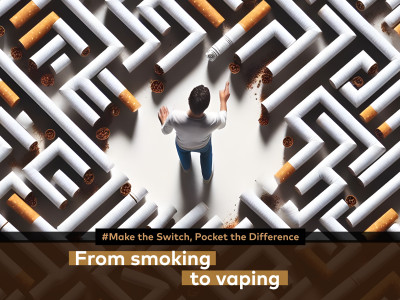The study said: “[The] cells exposed to the e-liquids or blood are less viable and exhibit significantly increased levels of molecules implicated in DNA damage and cell death. The cells are also less able to form new vascular tubes and to migrate and participate in wound healing.”
Joseph Wu made frequent references to the supposed teen epidemic, and falsely made out that it is easy to overdose from nicotine when vaping: “It’s much easier to expose yourself to a much higher level of nicotine over a shorter time period. And now we know that e-cigarettes are likely to have other significantly toxic effects on vascular function as well. It’s important for e-cigarette users to realise that these chemicals are circulating within their bodies and affecting their vascular health.”
We pointed out that Public Health England states: “There is no clear evidence that specific e-liquid flavourings pose health risks,” and “comparative risks of cardiovascular disease and lung disease have not been quantified but are likely to be also substantially below the risks of smoking.”
Dr Farsalinos took issue with the latter part of their study first: “Another part of the study examined the acute effects of using e-cigarette or tobacco cigarette by collecting serum from 5 smokers and 4 e-cigarette users (2 of whom were dual users) and measuring several markers of inflammation and response of endothelial cells in vitro.”
“This part of the study is of limited value since it is irrelevant to flavours effects and included very few participants.”
Cuttingly, Dr Farsalinos pondered: “I wonder, however, how hard it is to find exclusive e-cigarette users in the US so that you can avoid combining exclusive and dual users into one group.”
He continued to note that the eliquids were used in their liquid form – and not vaped. This means that there was no oxidation process taking place at a coil, which caused him to look at published studies looking at cinnamaldehyde.
He writes: “There is a lot of literature about cinnamaldehyde having anti-oxidant, anti-inflammatory, anti-cancer properties, anti-diabetic and cardioprotective effects.”
“Cinnamaldehyde has been found to reduce plasma glucose levels by increasing (i.e. improving) insulin sensitivity and increasing glucose uptake by cells, and to improve lipid homeostasis in diabetic rats (link). Cinnamaldehyde is also reported to have antimicrobial properties through various mechanisms, and these properties can be used to inactivate pathogens in food, protect farm animals and poultry from infections and perhaps even contribute to the treatment of drug-resistant bacterial infections (link).”
He points out: “Cinnamaldehyde in the cinnamon-flavoured liquids was not different from cinnamaldehyde present in food. In fact, if the observed effects are attributed to cinnamaldehyde, then cinnamaldehyde in food products must be equally toxic to endothelial cells.”
Dr Farsalinos concluded: “Cell and animal studies show conflicting results on the effects of cinnamaldehyde. It is possible, however, that the effects observed in the recent study were irrelevant to cinnamaldehyde and could be attributed to other compounds in the liquids. Still, I don’t think that this in vitro study can truly represent a model to understand the cardiovascular effects of e-cigarette flavourings.”
Resources:
- “Do the properties of cinnamon change when it is present in e-cigarette liquids?” by Dr Konstantinos Farsalinos – [link]
- “Heart Research Full Of Wu” on POTV – [link]
- “Modelling Cardiovascular Risks of E-Cigarettes With Human-Induced Pluripotent Stem Cell–Derived Endothelial Cells” by Wu et al., - [link]
- “Evidence review of e-cigarettes and heated tobacco products 2018: executive summary” by Public Health England [link]
Dave Cross
Journalist at POTVDave is a freelance writer; with articles on music, motorbikes, football, pop-science, vaping and tobacco harm reduction in Sounds, Melody Maker, UBG, AWoL, Bike, When Saturday Comes, Vape News Magazine, and syndicated across the Johnston Press group. He was published in an anthology of “Greatest Football Writing”, but still believes this was a mistake. Dave contributes sketches to comedy shows and used to co-host a radio sketch show. He’s worked with numerous vape companies to develop content for their websites.
Join the discussion
Parliament Fears Two
The Department for Environment, Food and Rural Affairs faced questions from a Conservative MP and, oddly, a member of the Department for Environment, Food and Rural Affairs
Harm Reduction For The Rich
The United Kingdom risks becoming a harm reduction country only for the wealthy, according to Michael Landl of the World Vapers’ Alliance
Sacrificing Health For 2p Cut
Tory Government alienates vaping voters with its mission to cut tax by an unaffordable 2p to attract voters by placing a tax on vape products in the forthcoming budget
Scotland Announces Single-Use Vape Action
A ban on the sale and supply of single-use vapes in Scotland is due to come into effect on 1 April 2025, under proposed legislation published today












